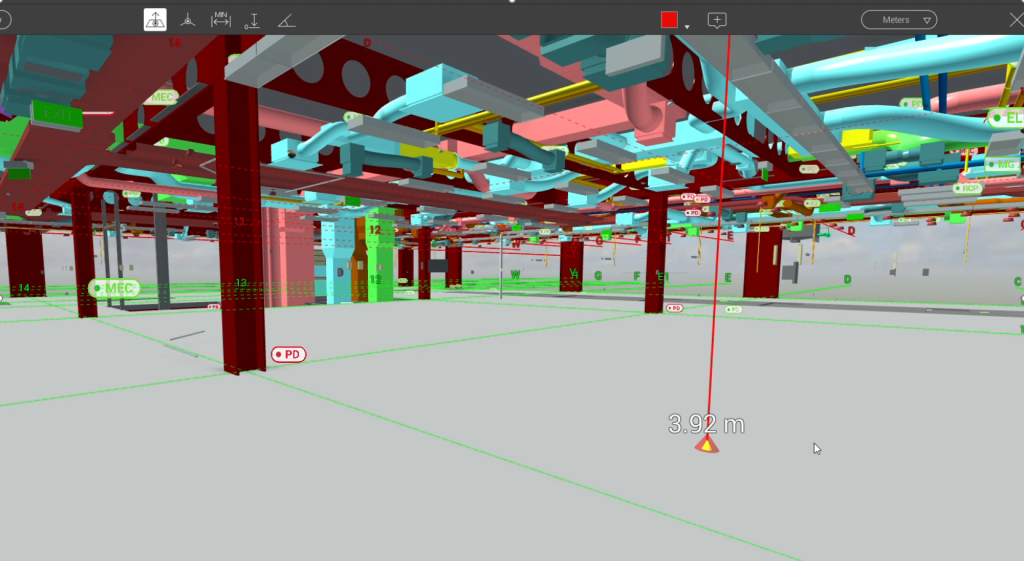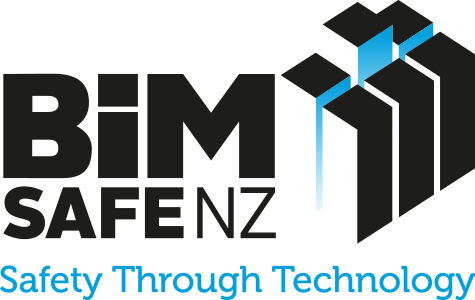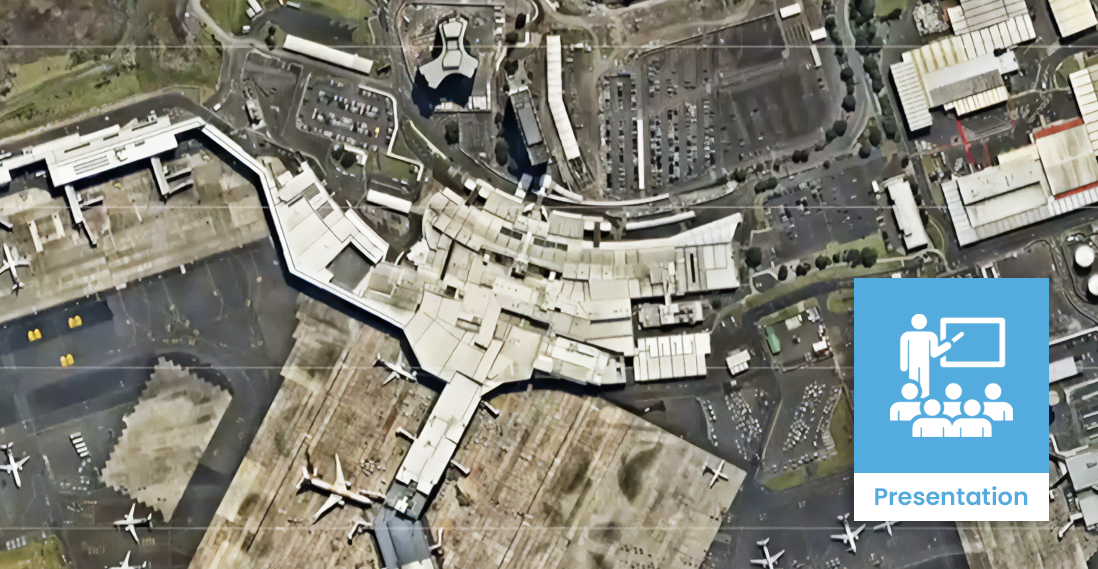Operator / Facilities Manager | Model interaction for reporting and documentation
Description
Facility operators use digital models to represent real-world objects within the facility. The model can communicate a range of real-time information, including the facility’s design, day-to-day operations, site conditions, movement of people, and asset status.
Personnel within the facility can interact directly with the model or through dashboards and other information overlays to access the most up-to-date information and share with any stakeholders. It can be particularly valuable as a record of elements that are not easily visible or accessible, for example, above a ceiling or within a wall.

Interaction with a BIM model to check measurements to services above a ceiling. Photo provided by Naylor Love.
Case studies
Uses and benefits for health and safety
Interacting with digital facility models enhances health and safety reporting and documentation by:
- space
- Providing quick access to up-to-date safety information for specific areas or equipment, including elements hidden behind or within other elements
- space
- Enabling visual representation of hazards and safety measures in reports, improving understanding among stakeholders
- space
- Facilitating real-time documentation of safety inspections and audits, ensuring timely communication of issues
- space
- Supporting the creation of detailed, location-specific safety procedures by referencing accurate facility data
- space
- Allowing easy tracking and reporting of safety-related maintenance tasks and their completion status
- space
- Supporting incident investigations by providing detailed contextual information about the facility layout and conditions
Technology/techniques
Ad-hoc information access and query is possible using BIM authoring tools. However, more formal reports and documentation, particularly those with specific formats, would need a special software applications that can access and gather the required information from the model.
Alternatively, BIM authoring software tools are often able to export raw data and information that can then be formatted and used in conjunction with reporting and documentation applications such as Microsoft Word or Excel.
Live information about the facility can also be reported on a website and made available on demand. In this case, the web application would need to be able to interact with the model and access the required information accordingly. Personnel and members of the organisation can then use this information for various purposes.
Model/data requirements
The most up-to-date as-built model of the facility should be maintained as the baseline. Quantities and dimensions of every component of each building or structure must be recorded accurately and reflect actual current conditions.
It is important to note that not all information should be incorporated into the model itself. Some can stay external to the model as long as a link is maintained and synchronised whenever the information is updated.
Hardware and software requirements
Standard computing and mobile devices capable of accessing BIM models can be used for model interaction and to access and share information. BIM authoring software applications are usually needed to edit and update information on the model. However, there are other software applications that can be used to edit and update information on the model without using the authoring tools. There must be a robust quality assurance process in place to ensure the central model is updated correctly with the accurate information.
It is expected that a complementary software application that can interact with the model is also used for reporting and documentation.
Contract/procurement implications
Overall, the ability to interact with the model allows accessing and sharing information more efficiently as well as promoting transparency. This also supports contract and procurement activities, particularly for reporting and documentation as part of the facility operations.
Facility managers would need to have some basic BIM knowledge such as what information is available and how to access them. They must also be able to coordinate with BIM managers.
Roles and responsibilities
| Facility manager | Oversees the use of digital models in facility operations, ensuring they support effective health and safety reporting and documentation processes. |
| BIM manager | Maintains and updates the digital facility model, ensuring it contains accurate and current information relevant to health and safety reporting. |
| Health and safety officer | Uses the model to access and document safety-related information, create reports, and communicate safety measures across the organisation. |
| Maintenance team | Interacts with the model to document completed safety-related tasks and updates equipment status, contributing to accurate health and safety reporting.
|
| IT support | Ensures the necessary software and hardware are available and functioning for all users to access and interact with the digital model, may need to manage some programming to interface between the BIM model and specialised reporting formats. |
Training requirements
Navigating the model to extract information is generally straightforward as software applications are getting more intuitive, but editing and updating information on the model may require special training, the level of which depends on the requirements of different organisations.
Using dedicated software tools to interact and get the required information from the model may need a separate training exercise specifically for those tools.
Future directions
App-based reporting tools that overlay on the BIM model are becoming available to manage reporting and documentation activities, and offer an immediate means of recording maintenance activities that may have implications for health and safety. Using immersive AR and VR techniques to view the model and get the right information is another future trend.

